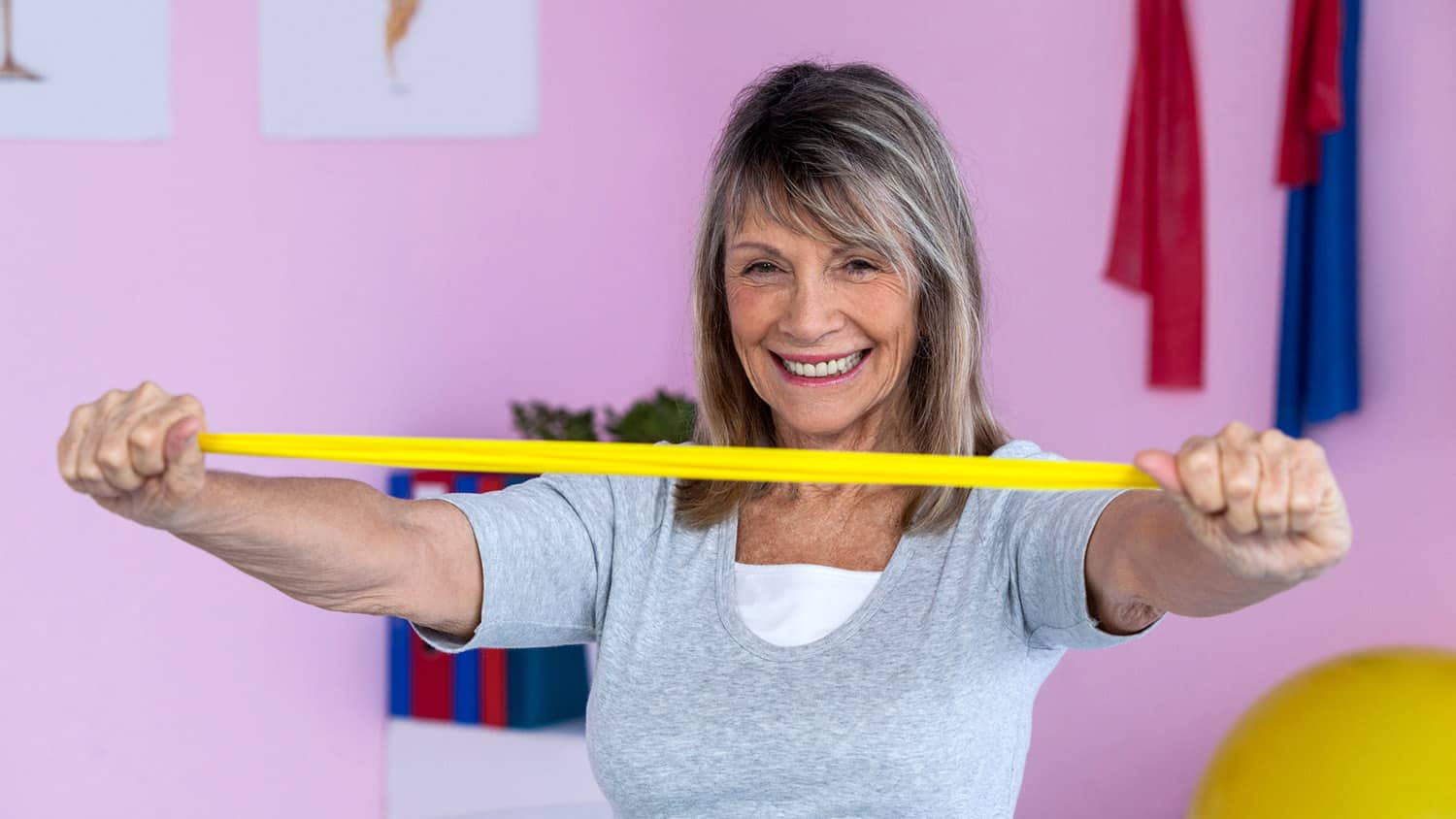
3 Top Exercises for Osteoporosis (And 1 You Should Never Do!)
Do you worry that you’re not doing enough exercise – or the right kinds? Are you concerned about getting hurt if you exercise incorrectly? Wondering what really works to build your bones?
In my line of work, I communicate with many clients who wonder those same questions. Here are my three top exercises for osteoporosis (and 1 you should never do!)
Our Bones – The Bad News and The Good News
The bad news is that approximately 20 million women aged 50+ in European Union countries have osteoporosis. In the United States, over 50% of women over 50 are at risk to break a bone, according to the National Osteoporosis Foundation.
The other bad news (I promise this part is almost done!) is that age is the #1 factor in fracture risk. In other words, the older we get, the more likely we are to break a bone.
The good news (yes, there is good news!) is that you are not a statistic! Osteoporosis is NOT inevitable, and broken bones aren’t either. You can take positive action steps at every stage of life to ensure that your bones stay strong.
It’s common knowledge that exercise is good for our bones, and research supports this.
Three types of exercise really stand out for building bones, and we’ll cover them below.
Note: Please check with your medical team before beginning anything new. Listen to your body to progress gradually, and always give recovery time in between sessions as needed.
Exercise #1 – Weight-Bearing Impact Exercise
Weight-bearing exercises are those where we hold our own body weight against gravity. Impact means that one object comes into contact with another forcibly.
Walking, dancing, and hiking are perfect examples that combine bearing weight on our feet and legs while impacting the earth with each step.
There are three kinds of impact exercise – low, high, and medium.
Low Impact Exercise
For an exercise to be low-impact, we always keep one foot on the ground. Walking is low-impact even when we walk briskly. This can be done daily or several days per week, depending on your distance, speed, and intensity.
High Impact Exercise
Exercises of high impact cause both feet to leave the ground at the same time. Examples include running, jumping, hopping, and vigorous dancing.
While some sources recommend that women with osteoporosis avoid high-impact activities, it is an individual judgement call that depends on the severity of your osteoporosis and your fitness level. Check with your medical team.
Medium Impact Exercise
Medium impact exercises include movements in which we impact the ground with more force than walking, but at least one foot stays on the ground.
The best example is stomping. When you stomp, one foot stays on the ground while the other makes a bigger impact. It’s safer than jumping because you can do it in a doorway, while going upstairs with one hand on the railing, or even sitting down.
Try it now – just raise one foot and stomp as if you were crushing a can with your foot. This is my favorite exercise to teach active older women, as it also helps us get out any frustrations with the satisfying loud stomp on the floor.
Weight-Bearing Impact for the Upper Body
What about weight-bearing impact for the upper body, you may ask.
We cannot ignore the bones of the upper body, as wrists are a common location for fractures. We bear weight on our hands and forearms in yoga and bodyweight exercises like planks and push-ups. Tennis and Pickleball also are great ways to add impact exercise for your upper body.
Exercise #2 – Resistance Exercise
Resistance exercise is another way to say “lifting weights” or “strength training.” Research proves that resistance exercise works to build bones.
Having worked in gyms and wellness centers for many years, I observed that many women skipped this essential aspect of fitness.
The other mistake I often see women make is staying with very light weights forever. To create changes in our bones, we must activate the “principle of overload.” This means that we must fatigue our muscles in order to strengthen our bones.
If you do an exercise 12-15 times, you should be so fatigued at the end that you could not do any more with good form. If you are not that tired, change the exercise and/or add resistance.
For upper body bone strength, I recommend push and pull exercises with a band. If you have arthritis in your hands or wrists, there’s still a way – check out this video:
Exercise #3 – Balance!
It’s no surprise that if you don’t fall, you probably won’t break! Balance exercise is a non-negotiable essential in every active woman’s routine. Unfortunately, most balance exercise programs for women over 60 don’t include balance exercises that look like real life.
We don’t fall and break a bone when standing on one leg while touching a wall with our hand. We don’t typically break a bone while standing on an imaginary balance beam next to our chair.
Please don’t get me wrong. It’s not that these are BAD exercises. They are a good starting point, but they don’t take us far enough into a zone of challenge, and they don’t mimic the challenges of real life.
Real-life challenges include tripping over a tree root, walking on a slippery surface, and stepping down from a steep stair.
To challenge your balance to prepare for real life, balance exercises need to be dynamic and three-dimensional. That means you’ve got to move your body forward and back, side to side, and in rotation.
For some examples, check out this video about how to make your balance exercises look like real life.
The One Exercise You Should Never Do
If you have osteoporosis in your spine, don’t hunch or crunch!
The lumbar spine is designed to have a natural curve inward. In anatomy terms, it’s called extension. The opposite is flexion, which rounds the spine forward.
Excessive flexion of an osteoporotic spine can lead to vertebral fractures, also called compression fractures. The fronts of the vertebrae experience too much pressure, and they give way in the form of small cracks.
Several movements that cause too much flexion should be avoided if you have osteoporosis in your spine:
- Hunched posture standing or seated;
- Sit-ups and abdominal crunches;
- Rounding your back while lifting an object;
- Flexion of your spine in yoga, Pilates, or other forms of exercise with repetitive forward bends. Keep your lumbar curve neutral.
What are you doing for strong bones? What exercises have helped you feel stronger? Have you had measurable improvement over the years in bone density due to exercise? Please leave a comment below!
Disclaimer: This article is not intended to provide medical advice. Please consult with your doctor to get specific medical advice for your situation.






